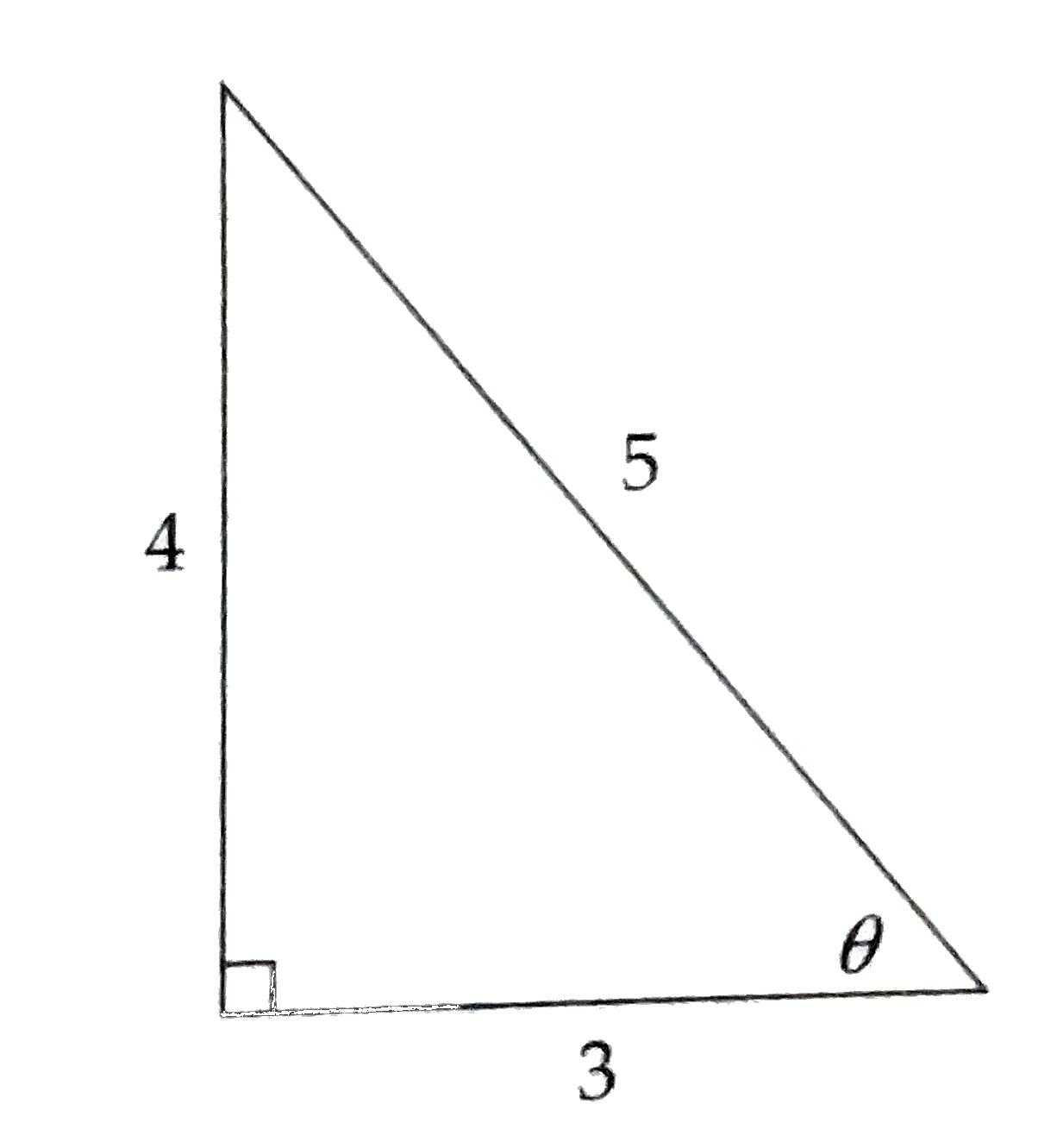Which of the following angles is greater ?
θ1=sin−1.45+sin−1.13andθ2=cos−1.45+cos−1.13
To determine which of the angles θ1 and θ2 is greater, we start with the definitions provided in the question:
θ1=sin−1(45)+sin−1(13)
θ2=cos−1(45)+cos−1(13)
Step 1: Use the identity for sine and cosine
We know the identity:
sin−1(x)+cos−1(x)=π2
We can apply this identity to both θ1 and θ2.
Step 2: Rewrite θ1 and θ2
Using the identity, we can rewrite θ1 and θ2:
θ1=sin−1(45)+sin−1(13)
θ2=cos−1(45)+cos−1(13)
Step 3: Combine the angles
Now, we can combine the angles:
θ1+θ2=(sin−1(45)+cos−1(45))+(sin−1(13)+cos−1(13))
Using the identity:
=π2+π2=π
Step 4: Analyze θ2
Now, let's analyze θ2:
θ2=cos−1(45)+cos−1(13)
Using the formula for the sum of cosines:
cos−1(x)+cos−1(y)=cos−1(xy−√(1−x2)(1−y2))
Let x=45 and y=13.
Step 5: Calculate θ2
Calculating θ2:
=cos−1⎛⎝45⋅13−√(1−(45)2)(1−(13)2)⎞⎠
Calculating 415−√(925)(89):
=cos−1(415−6√215)
This results in a negative value inside the cosine inverse, indicating that θ2 is an obtuse angle.
Step 6: Conclusion
Since θ1+θ2=π and θ2 is obtuse, it follows that θ1 must be acute. Therefore, we conclude that:
θ1<θ2
Final Answer
Thus, θ2 is greater than θ1.
---
θ2=cos−1(45)+cos−1(13)
We know the identity:
sin−1(x)+cos−1(x)=π2
We can apply this identity to both θ1 and θ2.
Using the identity, we can rewrite θ1 and θ2:
θ1=sin−1(45)+sin−1(13)
θ2=cos−1(45)+cos−1(13)
Now, we can combine the angles:
θ1+θ2=(sin−1(45)+cos−1(45))+(sin−1(13)+cos−1(13))
Using the identity:
=π2+π2=π
Now, let's analyze θ2:
θ2=cos−1(45)+cos−1(13)
Using the formula for the sum of cosines:
cos−1(x)+cos−1(y)=cos−1(xy−√(1−x2)(1−y2))
Let x=45 and y=13.
Calculating θ2:
=cos−1⎛⎝45⋅13−√(1−(45)2)(1−(13)2)⎞⎠
Calculating 415−√(925)(89):
=cos−1(415−6√215)
This results in a negative value inside the cosine inverse, indicating that θ2 is an obtuse angle.
Since θ1+θ2=π and θ2 is obtuse, it follows that θ1 must be acute. Therefore, we conclude that:
θ1<θ2
Thus, θ2 is greater than θ1.
Topper's Solved these Questions
- BOOK - CENGAGE ENGLISHCHAPTER - INVERSE TRIGONOMETRIC FUNCTIONSEXERCISE - Concept application exercise 7.112videos
INVERSE TRIGONOMETRIC FUNCTIONS
- BOOK - CENGAGE ENGLISHCHAPTER - INVERSE TRIGONOMETRIC FUNCTIONSEXERCISE - Concept application exercise 7.26videos
INVERSE TRIGONOMETRIC FUNCTIONS
- BOOK - CENGAGE ENGLISHCHAPTER - INVERSE TRIGONOMETRIC FUNCTIONSEXERCISE - Archives (Numerical Value type)2videos
INVERSE TRIGONOMETRIC FUNCTIONS
- BOOK - CENGAGE ENGLISHCHAPTER - INTRODUCTION TO VECTORS EXERCISE - MATRIX-MATCH TYPE3videos
INTRODUCTION TO VECTORS
- BOOK - CENGAGE ENGLISHCHAPTER - JEE 2019EXERCISE - Chapter 109videos
JEE 2019
Similar Questions
Which of the following angles is greater? θ1=sin−1(45)+sin−1(13)orθ2=cos−1(45)+cos−1(13)
View Solution1sec2θ=cos4θ−sin4θ.
View SolutionFind the principal values of the following :
(i) sin−1(sin.5π3) (ii) cos−1cos(4π3) (iii) cos[π3+cos−1(−12)]View SolutionWhich of the following is/are a rational number? sin(tan−13+tan−1(23)) cos(π2−sin−1(34)) (log)2(sin(14)sin−1(638)] tan(12cos−1(√53))
View SolutionProve that: sin−1(−45)=tan−1(−43)=cos−1(−35)−π
View Solutionsin2θ+13sin32θ+15sin52θ+....=
View SolutionIf →a=(3,1)and→b=(1,2) represent the sides of a parallelogram then the angle θ between the diagonals of the paralelogram is given by (A) θ=cos−1(1√5) (B) θ=cos−1(2√5) (C) θ=cos−1(12√5) (D) θ=π2
View Solution1sinθ+1cosθ=
 View Solution
View SolutionIf 12sin−1[3sin2θ5+4cos2θ]=tan−1x, then x=
View Solution2(sin6θ+cos6θ)−3(sin4θ+cos4θ)+1=0
View Solution

